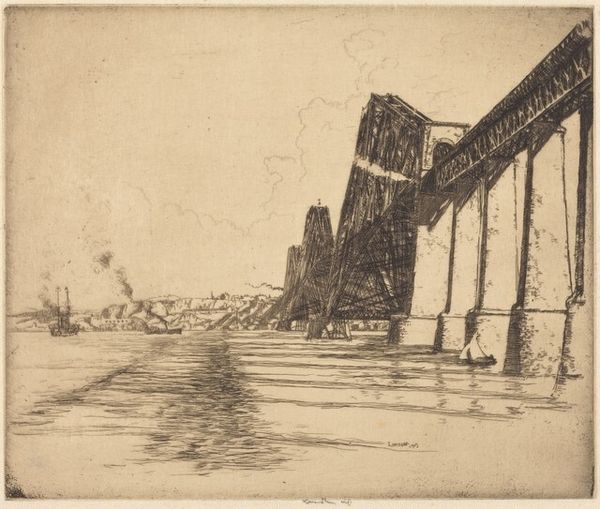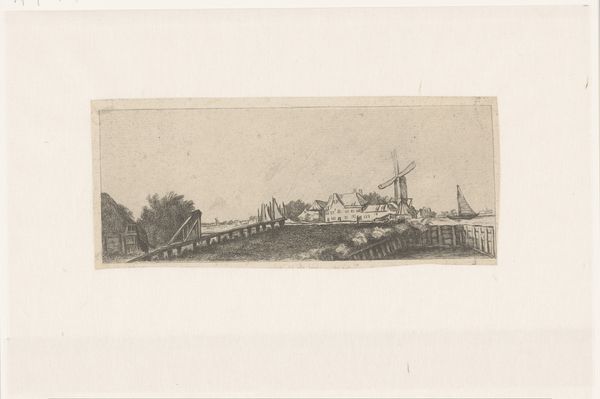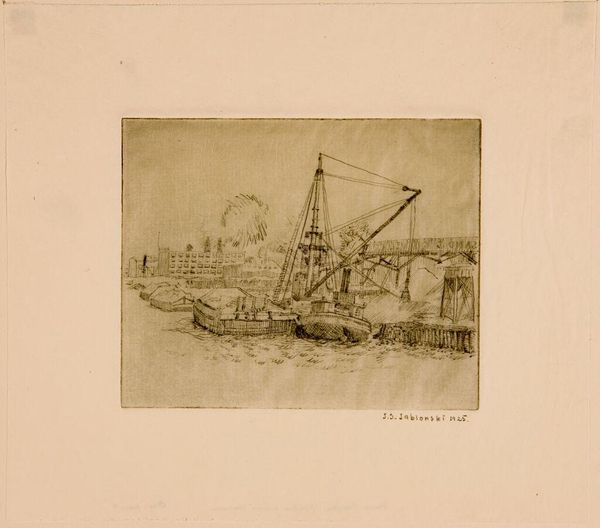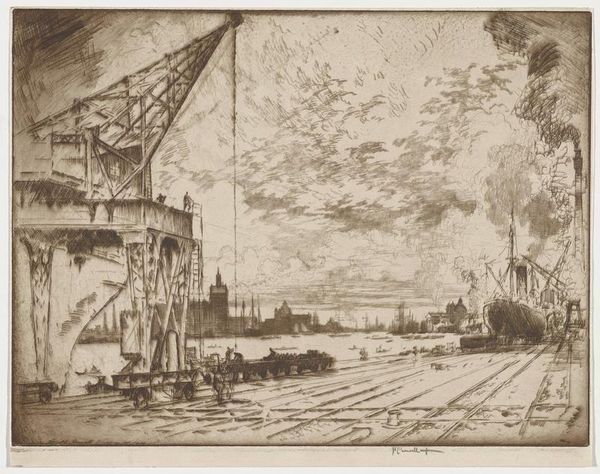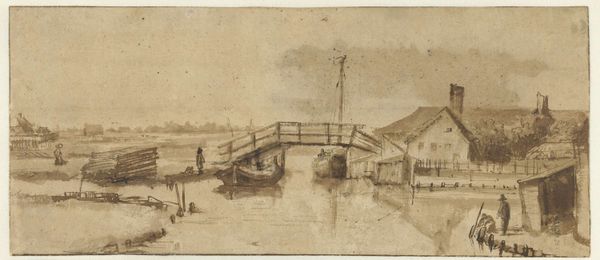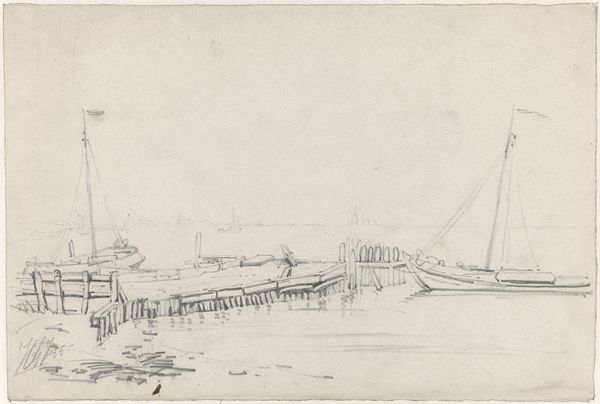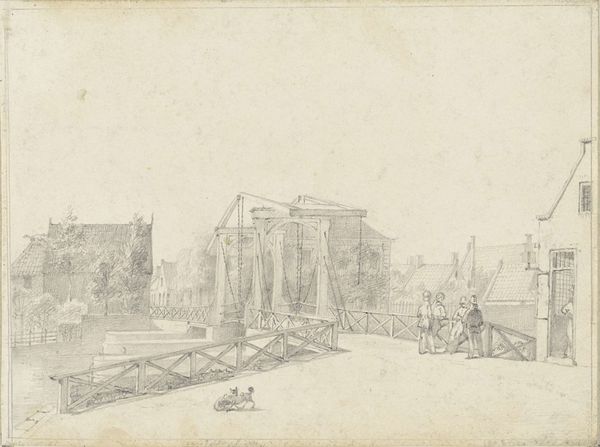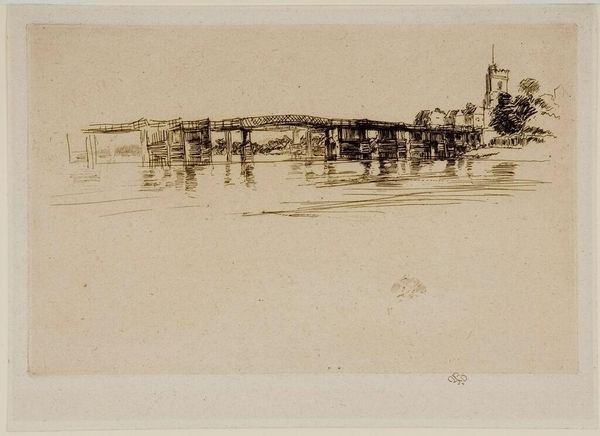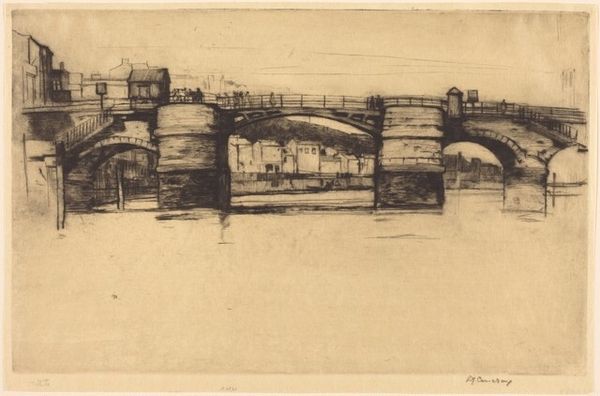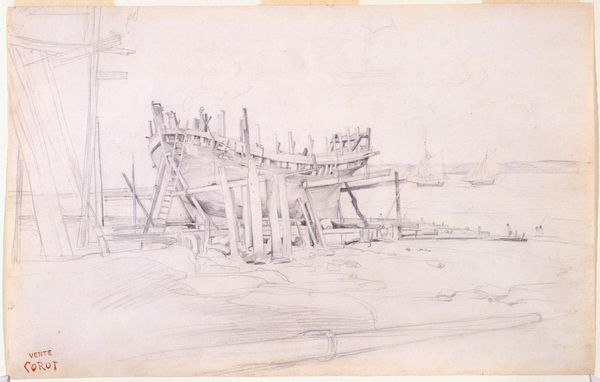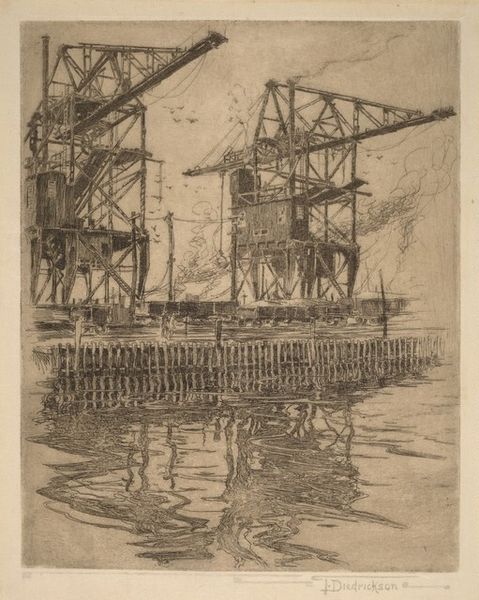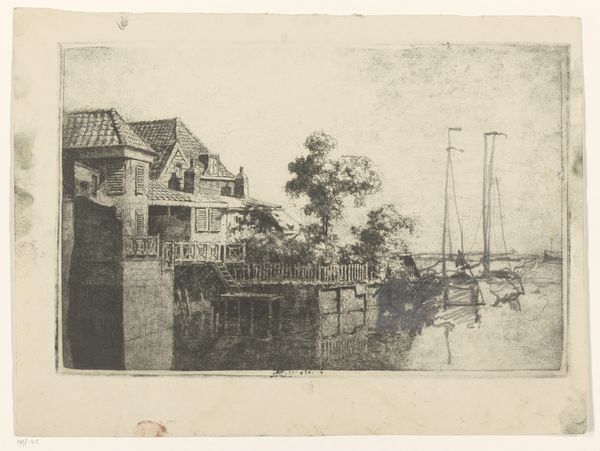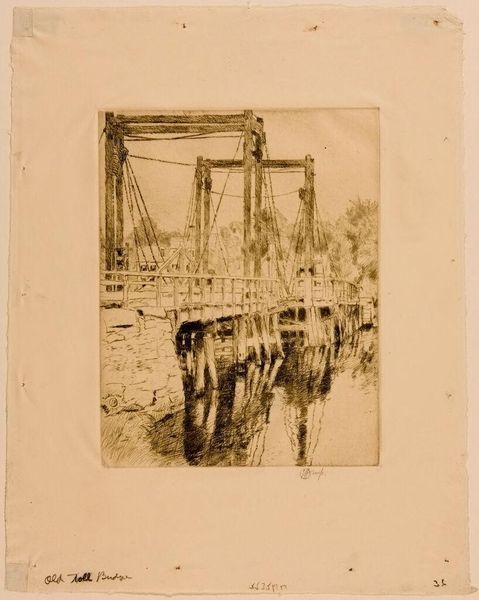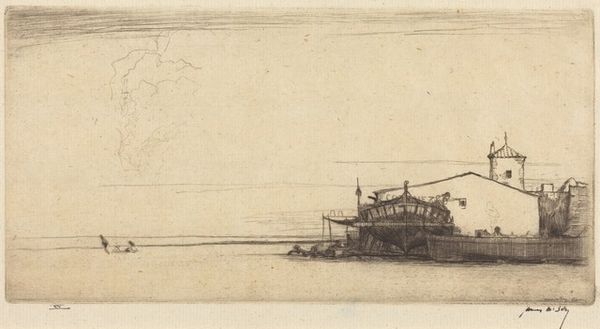
drawing, print, metal, etching
#
drawing
# print
#
metal
#
etching
#
landscape
#
etching
Copyright: National Gallery of Art: CC0 1.0
Curator: Oh, it’s wispy and melancholic. There's a real hush about this scene… makes me think of turning the page on a chapter, a quiet goodbye. Editor: You're picking up on the tonal range so common in etching, I see. David Young Cameron created "The Windmill" in 1892—this is a drawing on metal, an etching, essentially an early form of printmaking. Look how he's used lines to construct space, from the foreground boats to the distant horizon line. Curator: Those boats feel so present, like empty stages waiting for players who’ve already left. And that windmill, looming…part faded memory, part silent sentinel. Etchings have a unique delicacy, don’t they? Like catching a fleeting dream. Editor: Precisely. This work reflects a period where landscape art was used to negotiate the pressures of urbanization. The etching medium allowed artists to respond to mass-produced imagery, creating scenes of solitude and connection with nature. Windmills themselves often symbolized industrial progress, or resistance to it, depending on the reading. Curator: Makes me wonder about the residents...What were their lives like, so entwined with nature and perhaps the turning wheel of industry? I'm really getting that sense of nature meeting modernity. Editor: I think that question is key. Cameron often situated his art in rural, pre-industrial settings, imbuing them with the aesthetic language of industry: careful delineation of light and shadow, a composition reminiscent of classical landscapes… He captures a critical point, almost romanticizing that transition, whilst acknowledging a disappearing way of life. Curator: Ah, that blend! Like a photograph touched by a painter’s brush. This little beauty captures time—passing, blending, reshaping everything it touches. Editor: A testament to how artists engaged with progress—or at least their representations of progress—within an increasingly changing world. This single, evocative scene raises multiple interconnected dialogues that remain incredibly potent for modern viewers. Curator: Very much! A gentle reminder to notice the beauty and change intertwining, like whispers on the wind.
Comments
No comments
Be the first to comment and join the conversation on the ultimate creative platform.
